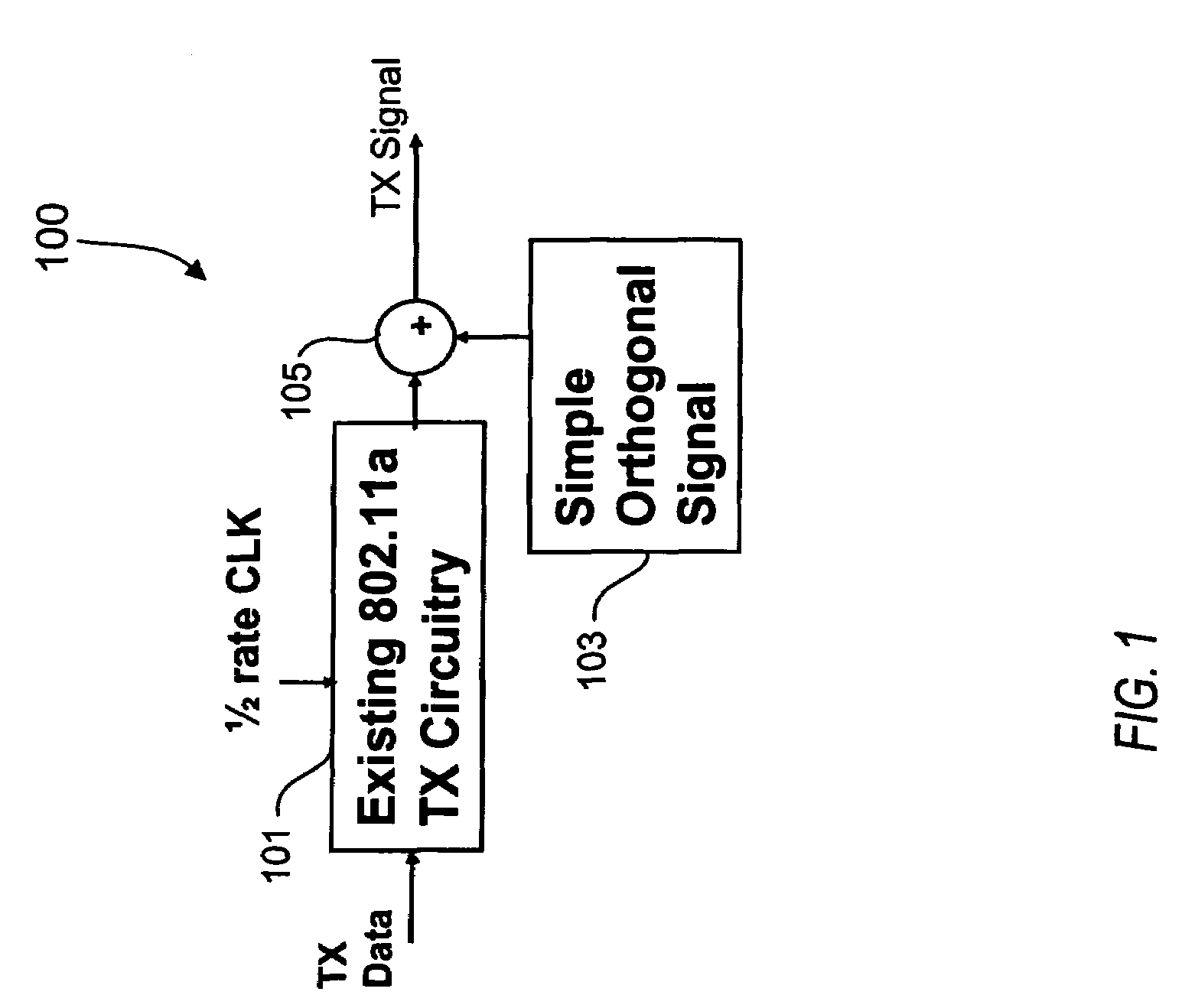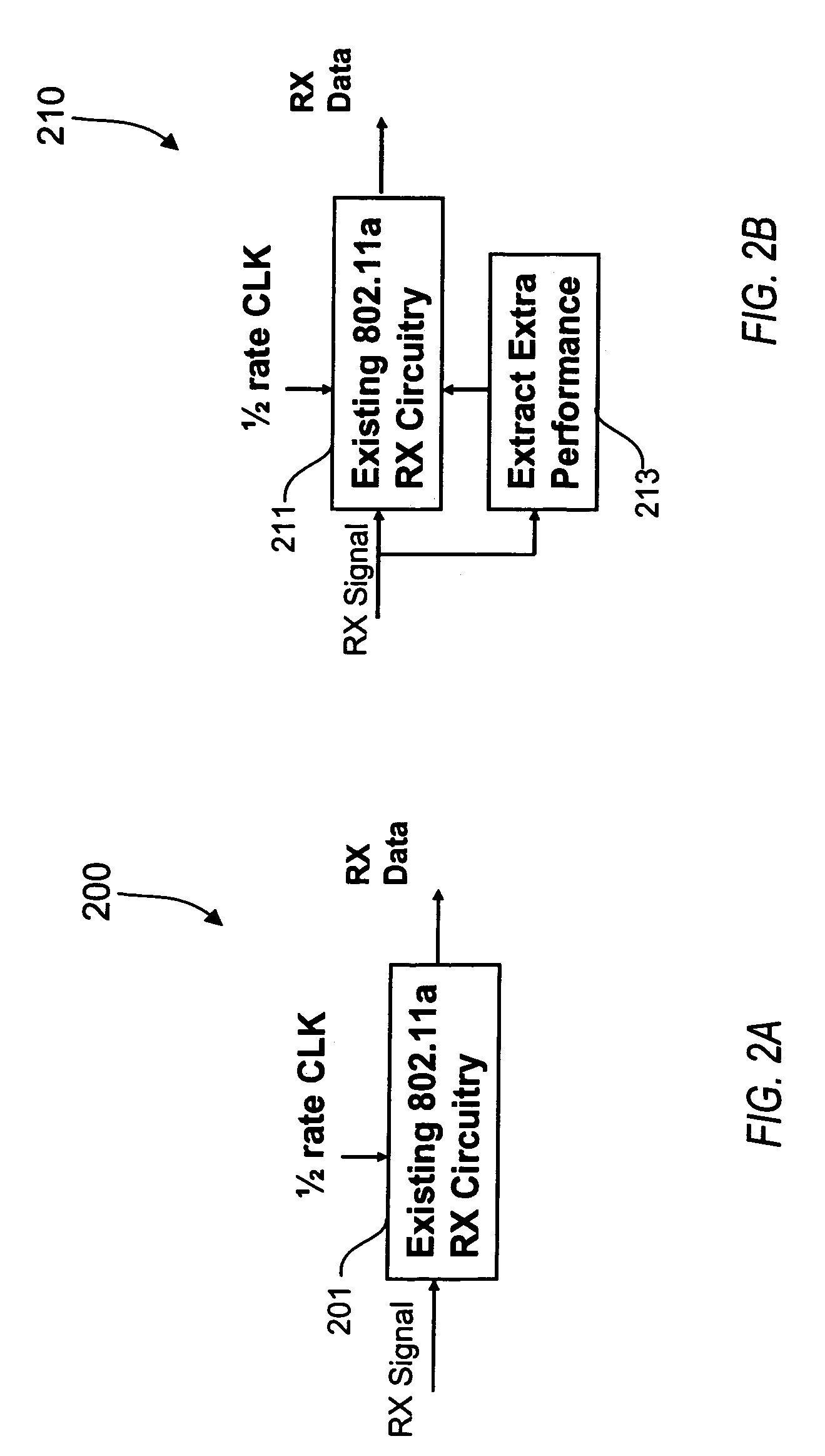Modified OFDM subcarrier profile
a subcarrier profile and subcarrier technology, applied in the field of wireless communication, can solve the problems of significantly reducing performance, high cost of 10 ppm oscillators, and high cost of ppm oscillators, and achieves low cost, easy modification, and good performance.
- Summary
- Abstract
- Description
- Claims
- Application Information
AI Technical Summary
Benefits of technology
Problems solved by technology
Method used
Image
Examples
Embodiment Construction
[0037]The following description is presented to enable one of ordinary skill in the art to make and use the present invention as provided within the context of a particular application and its requirements. Various modifications to the preferred embodiment will, however, be apparent to one skilled in the art, and the general principles defined herein may be applied to other embodiments. Therefore, the present invention is not intended to be limited to the particular embodiments shown and described herein, but is to be accorded the widest scope consistent with the principles and novel features herein disclosed.
[0038]FIG. 1 is a simplified block diagram of a transmitter 100 implemented according to exemplary embodiments of the present invention. The existing 802.11a transmitter circuitry is employed as shown at 101, except operated at one-half rate, e.g., operated using a 10 megahertz (MHz) clock rate rather than the standard 20 MHz clock rate. Also, the RF oscillators are configured ...
PUM
 Login to View More
Login to View More Abstract
Description
Claims
Application Information
 Login to View More
Login to View More - R&D
- Intellectual Property
- Life Sciences
- Materials
- Tech Scout
- Unparalleled Data Quality
- Higher Quality Content
- 60% Fewer Hallucinations
Browse by: Latest US Patents, China's latest patents, Technical Efficacy Thesaurus, Application Domain, Technology Topic, Popular Technical Reports.
© 2025 PatSnap. All rights reserved.Legal|Privacy policy|Modern Slavery Act Transparency Statement|Sitemap|About US| Contact US: help@patsnap.com



